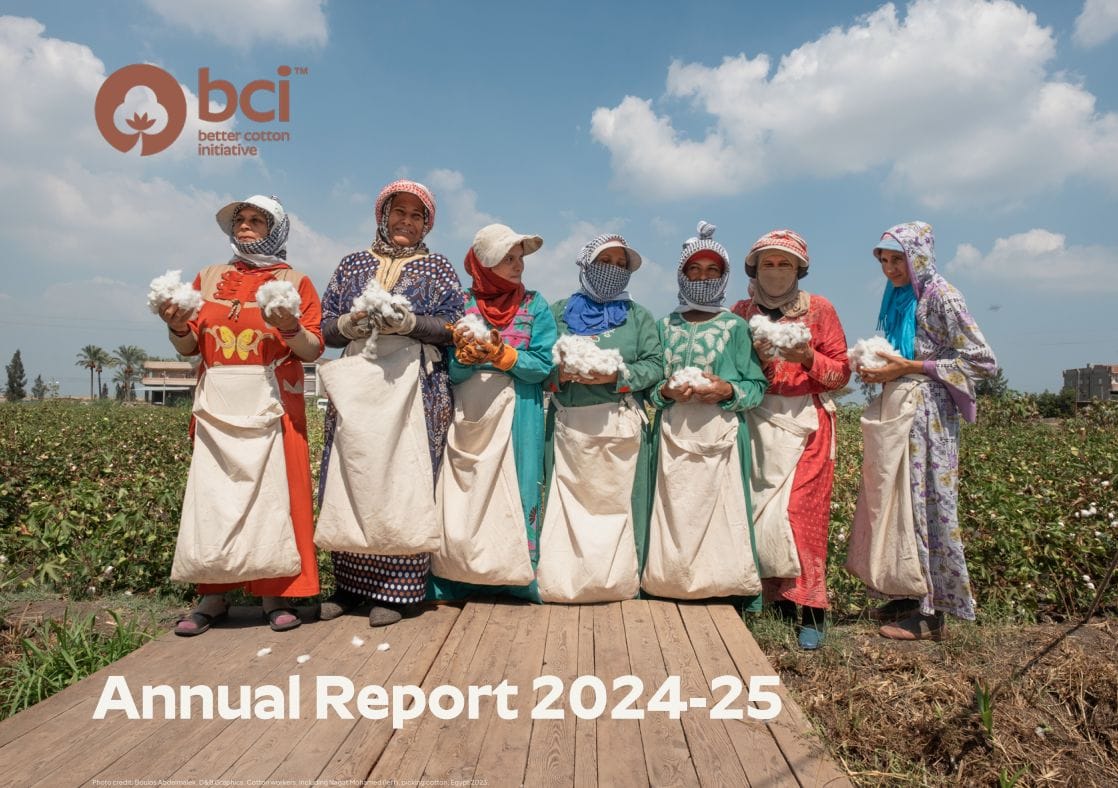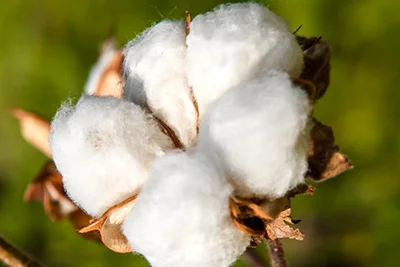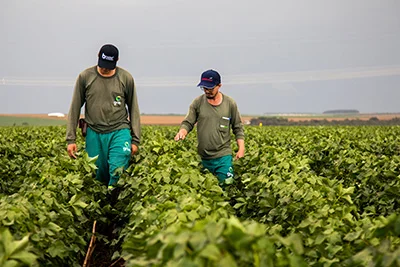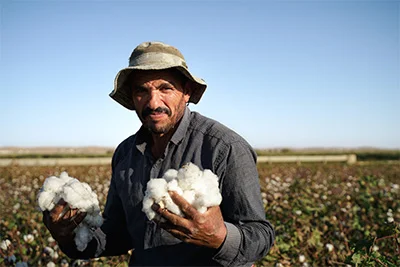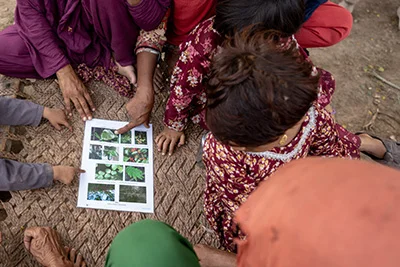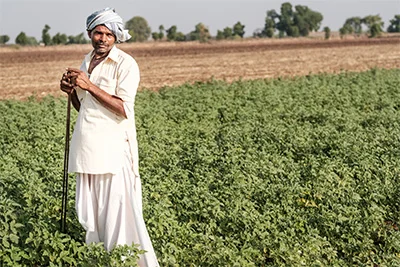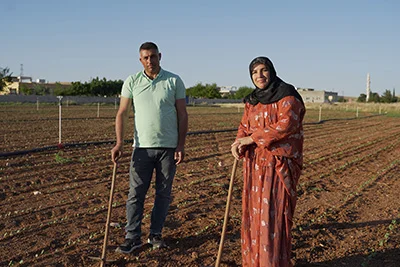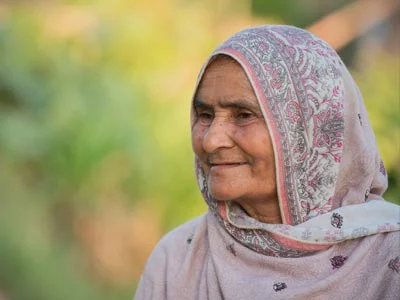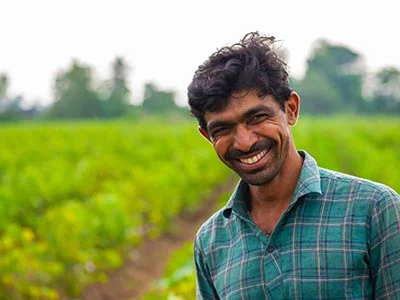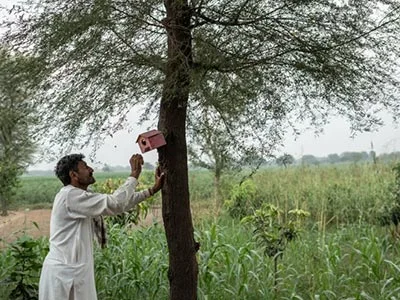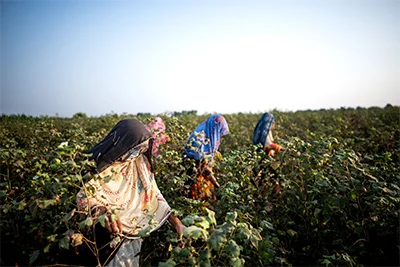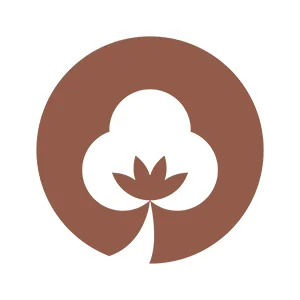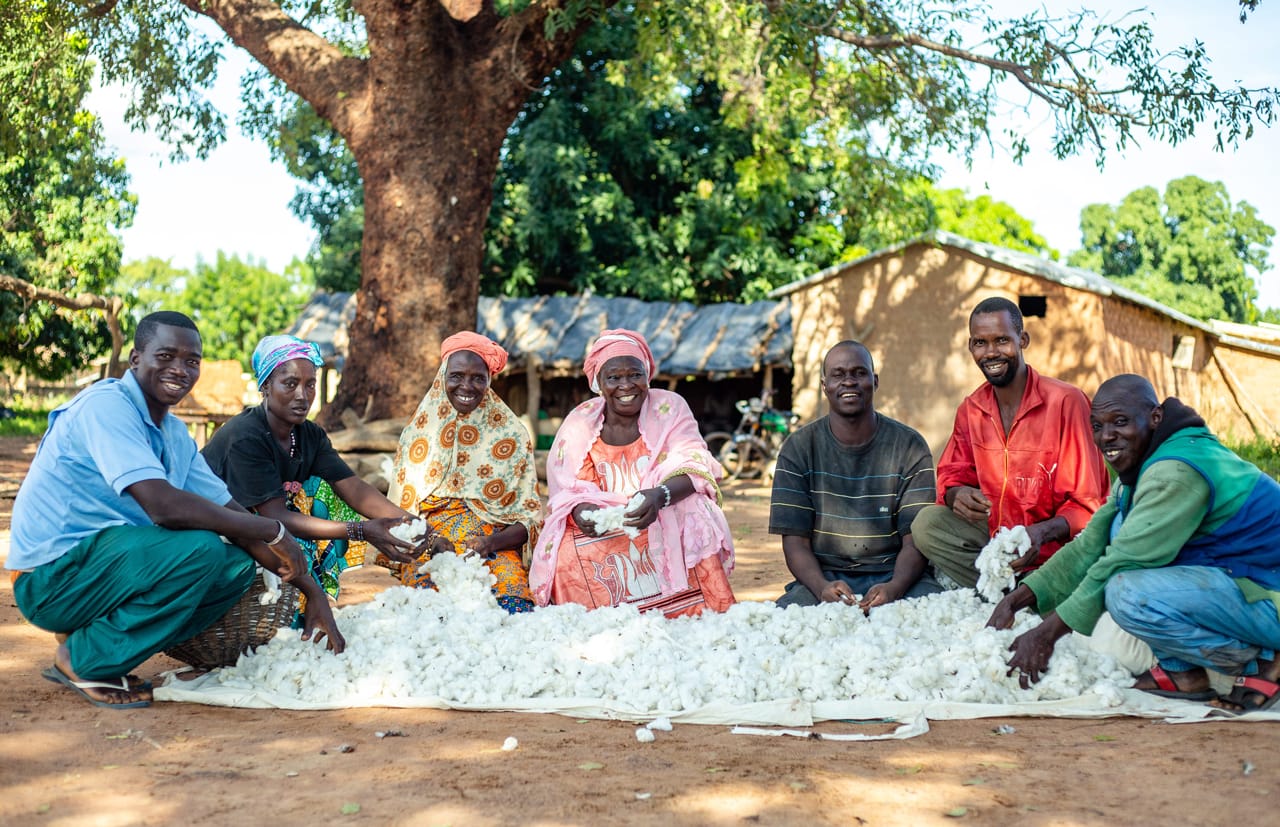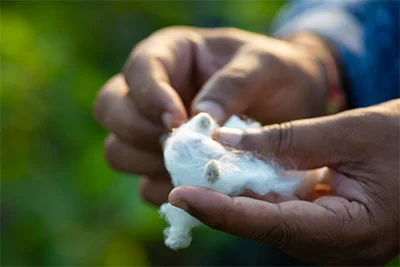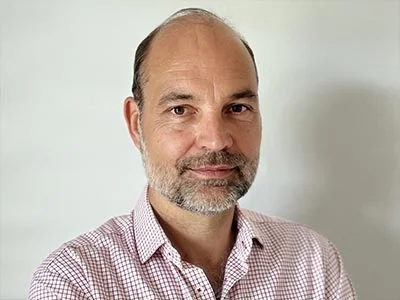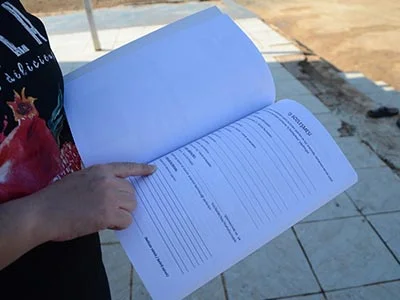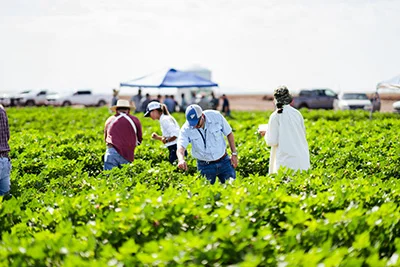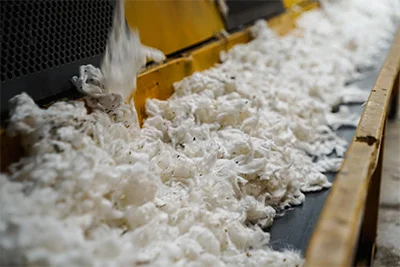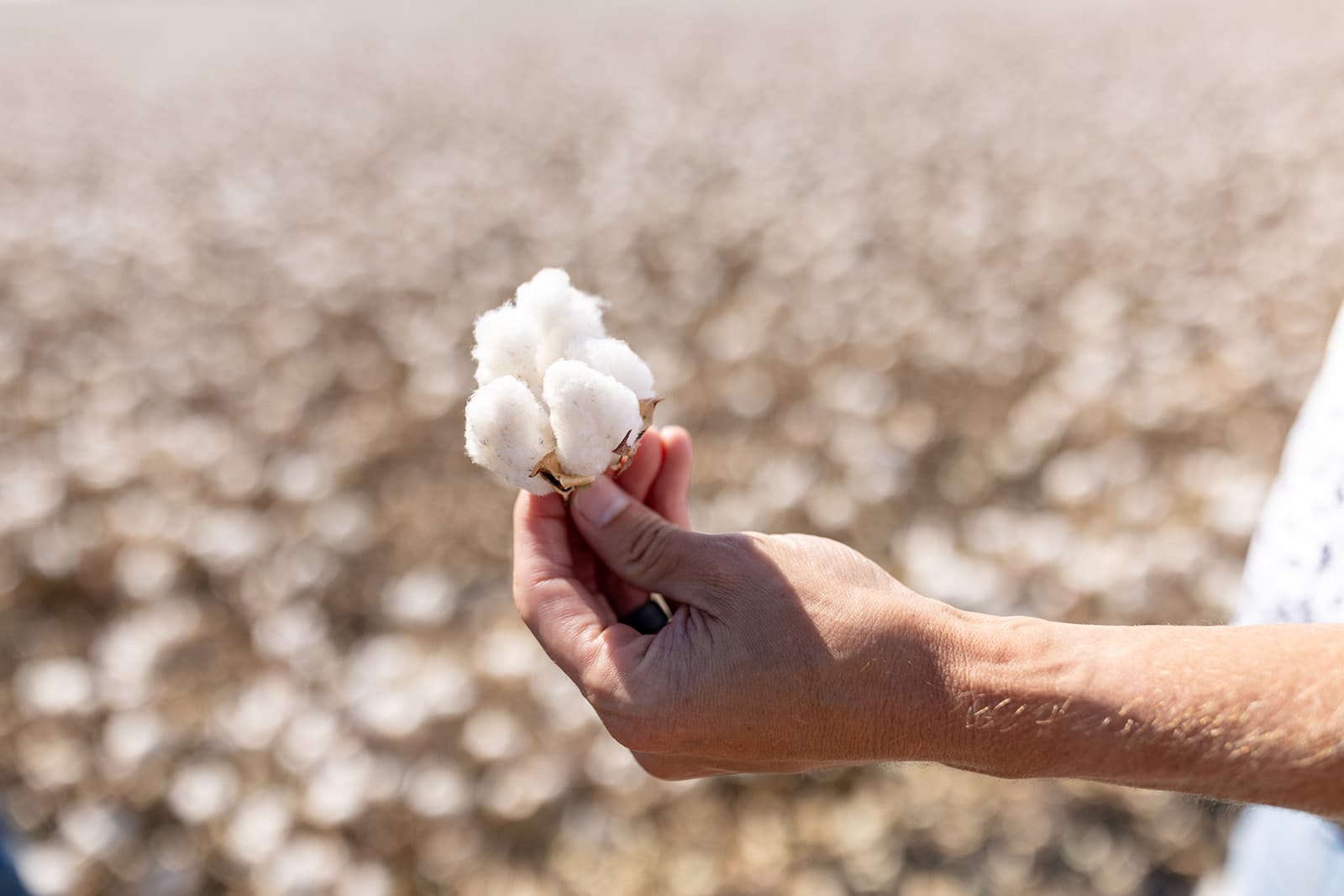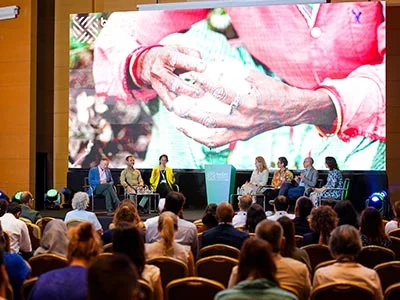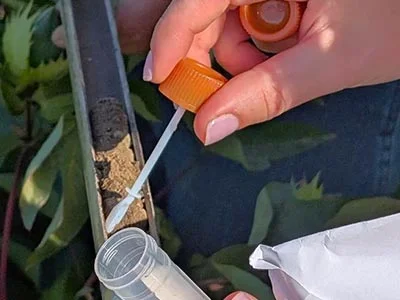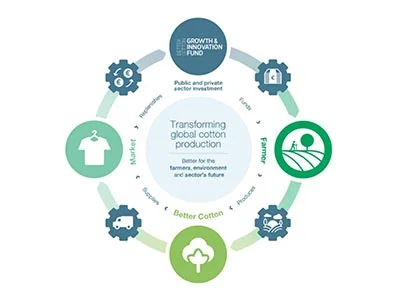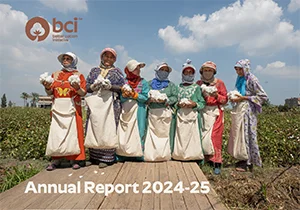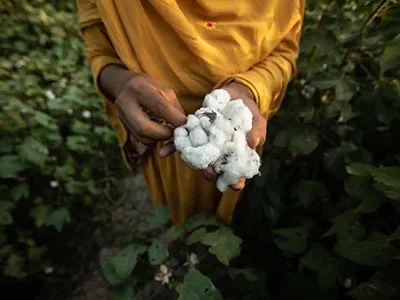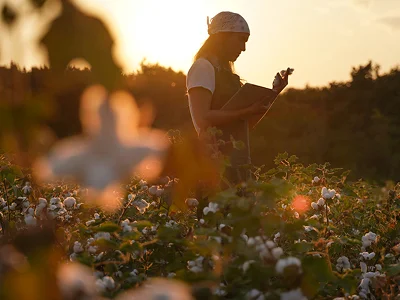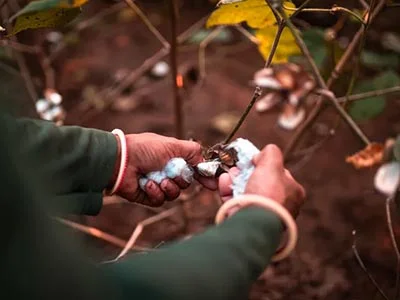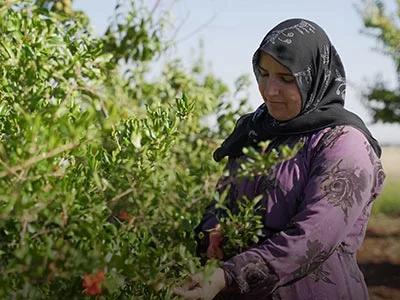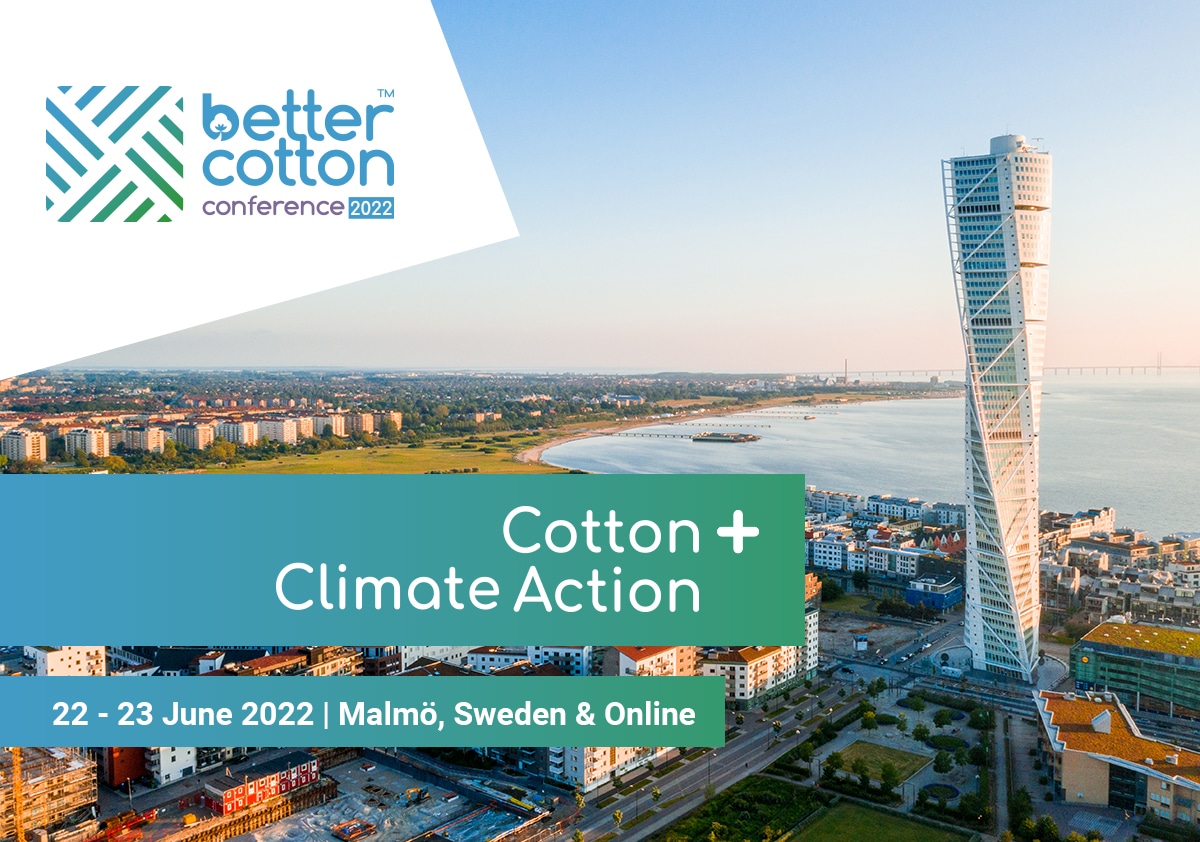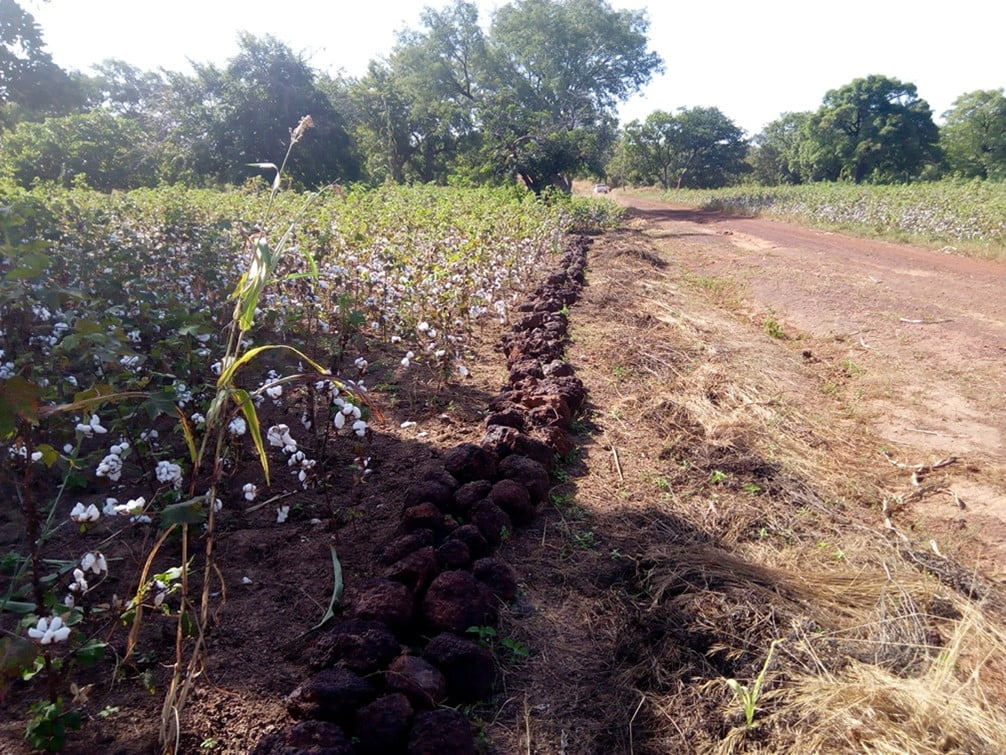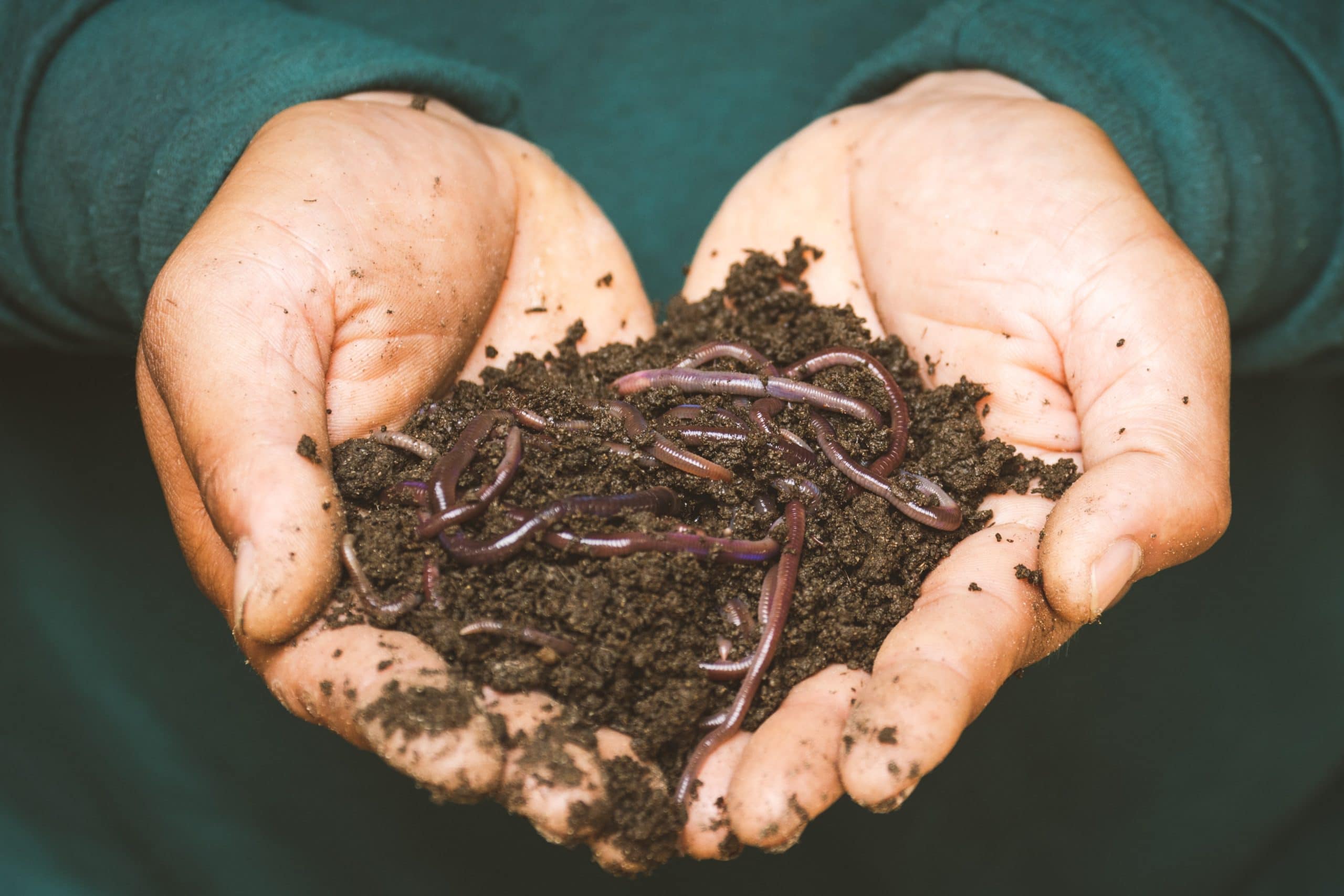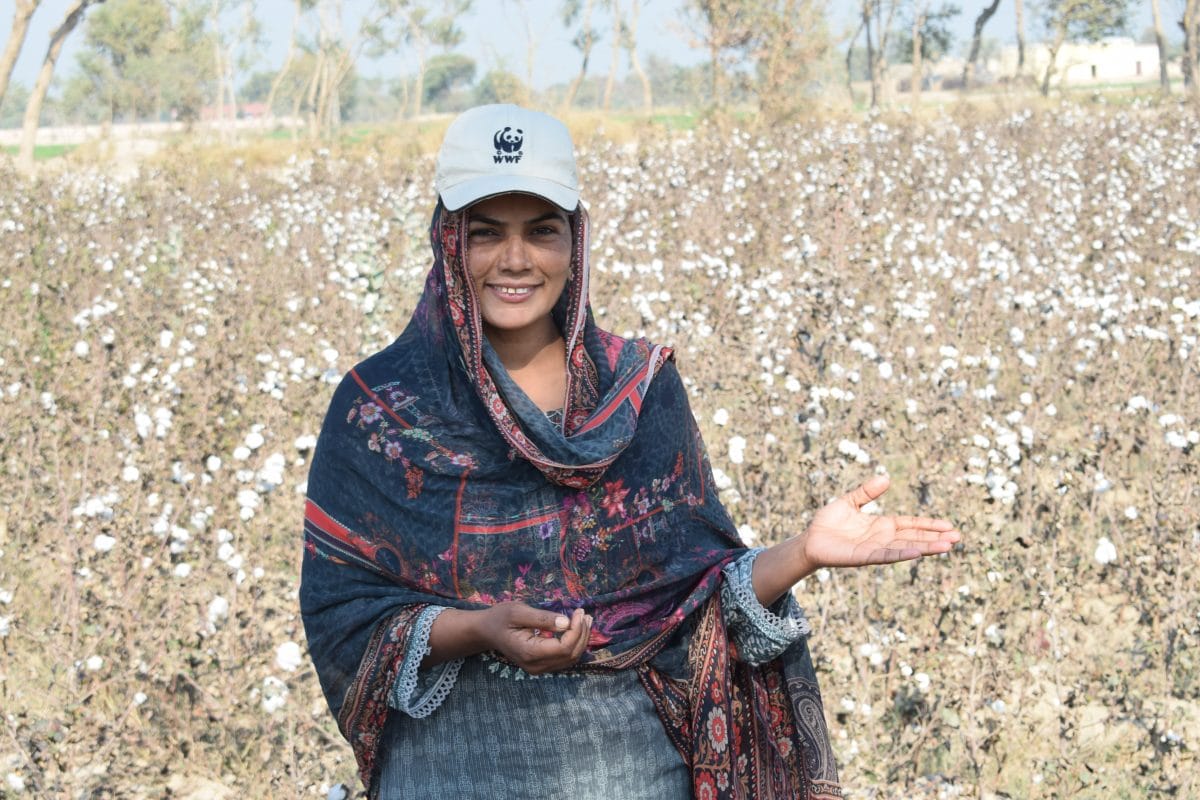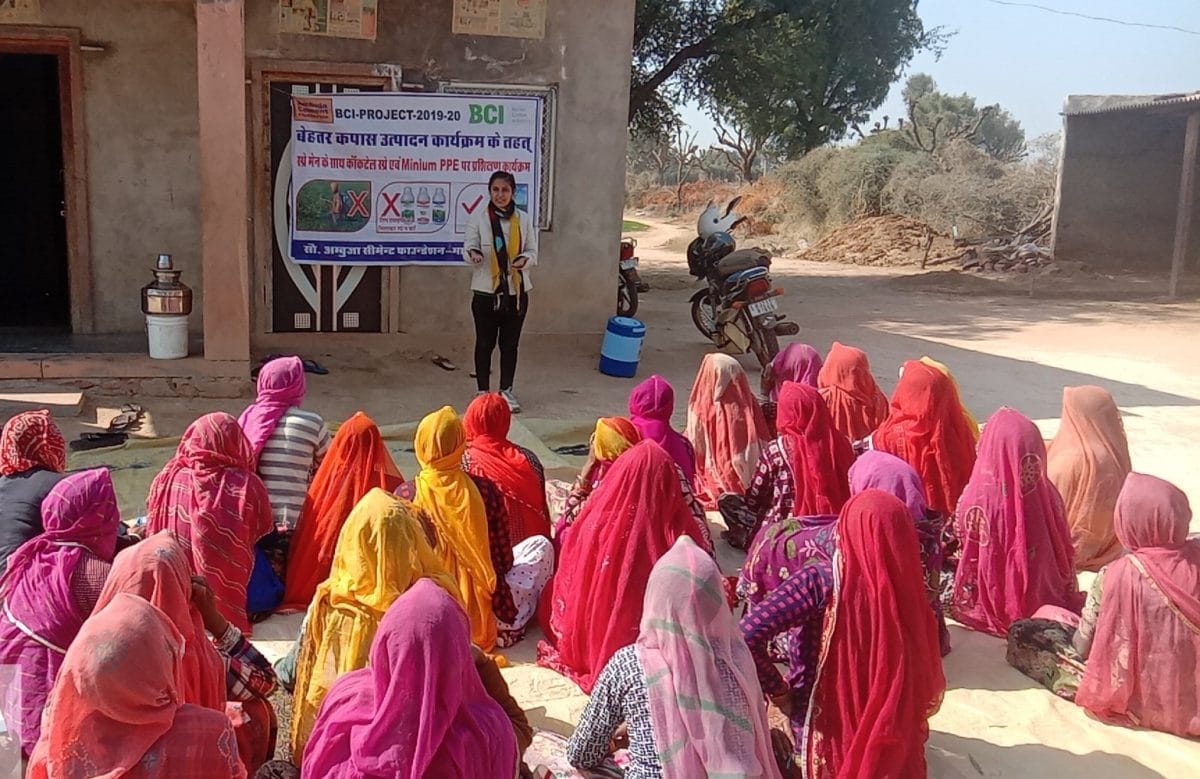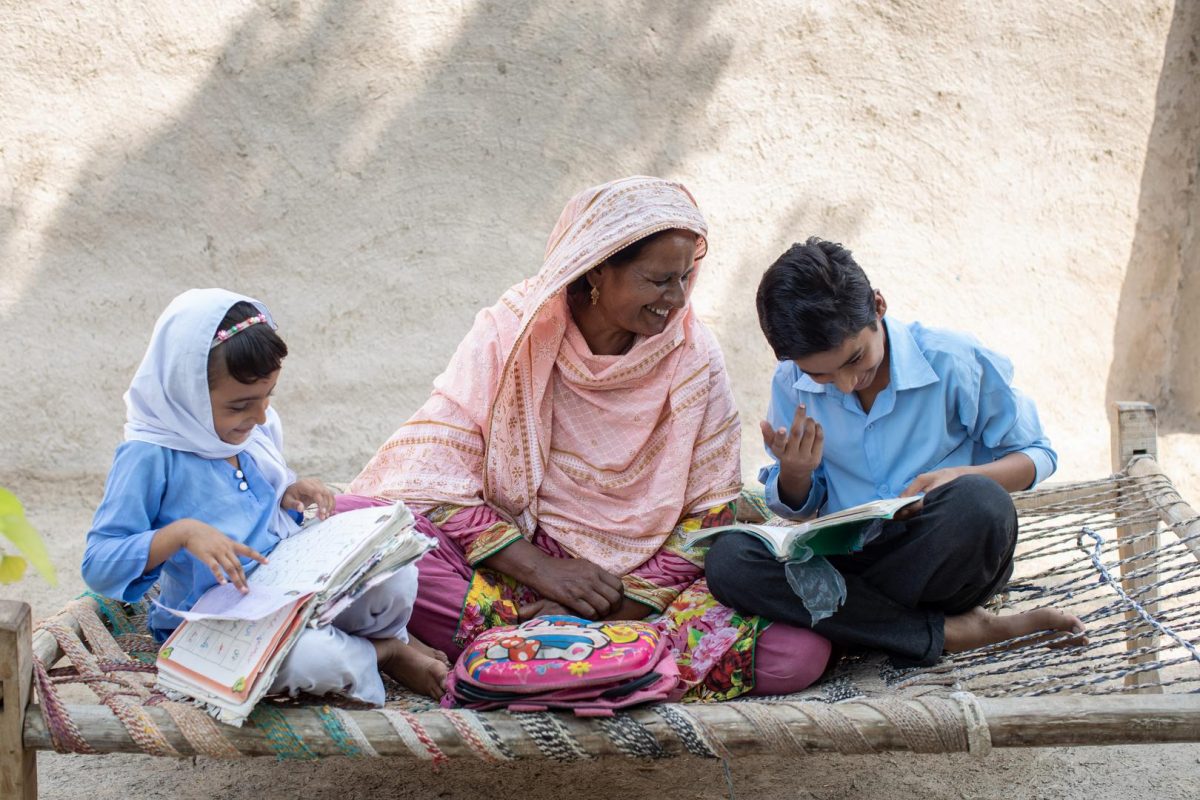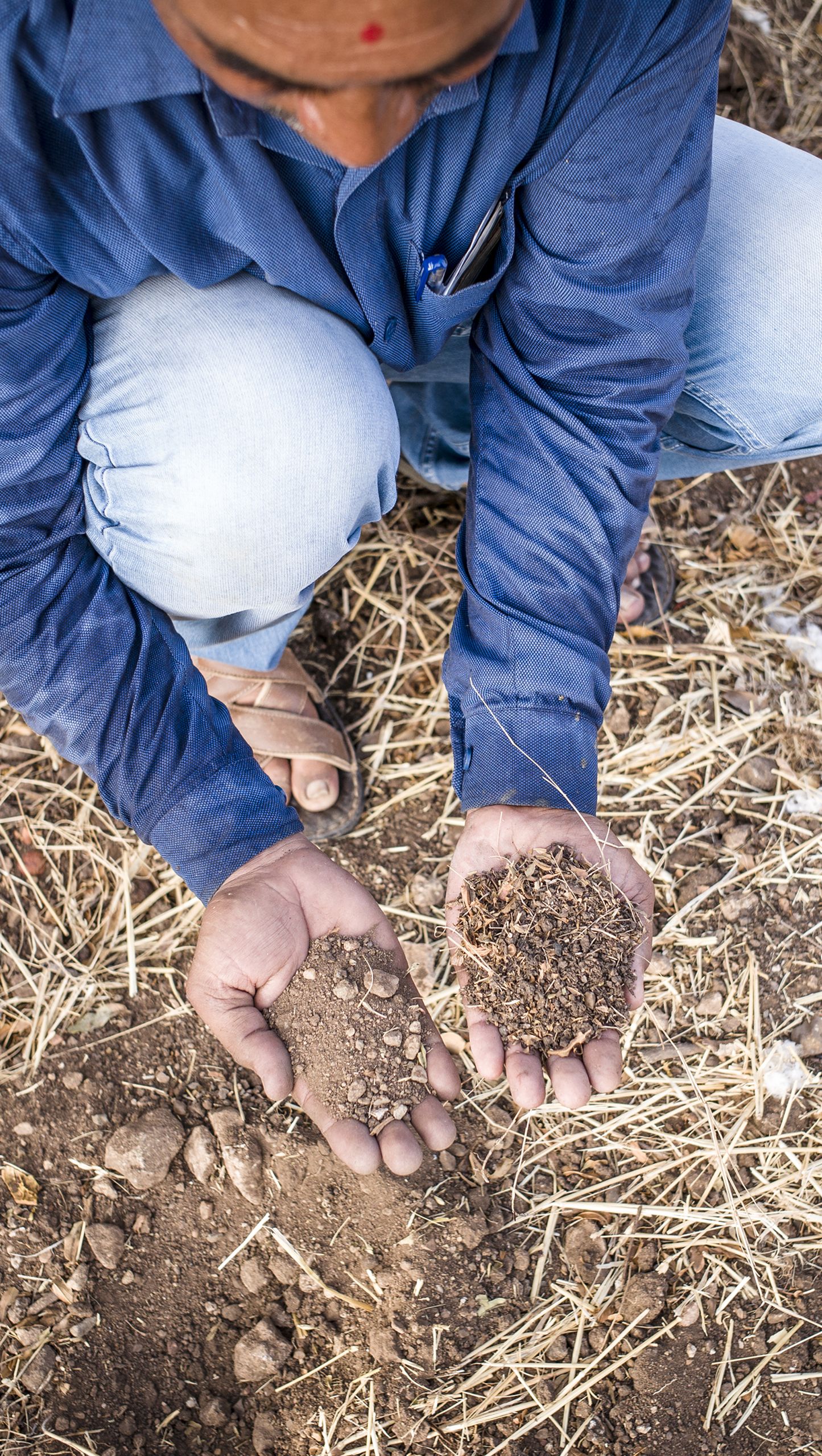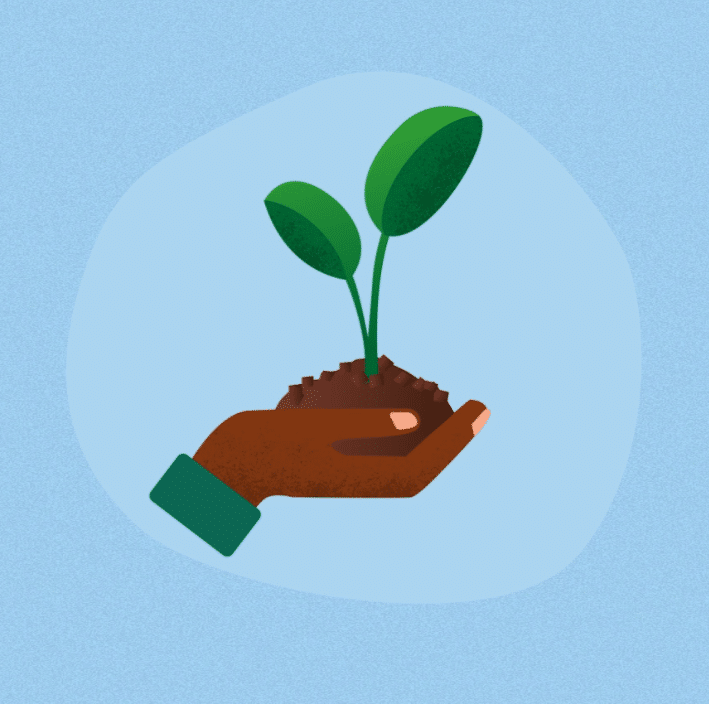Better Cotton Conference Registration Is Open: Early Bird Tickets Available for Two Weeks
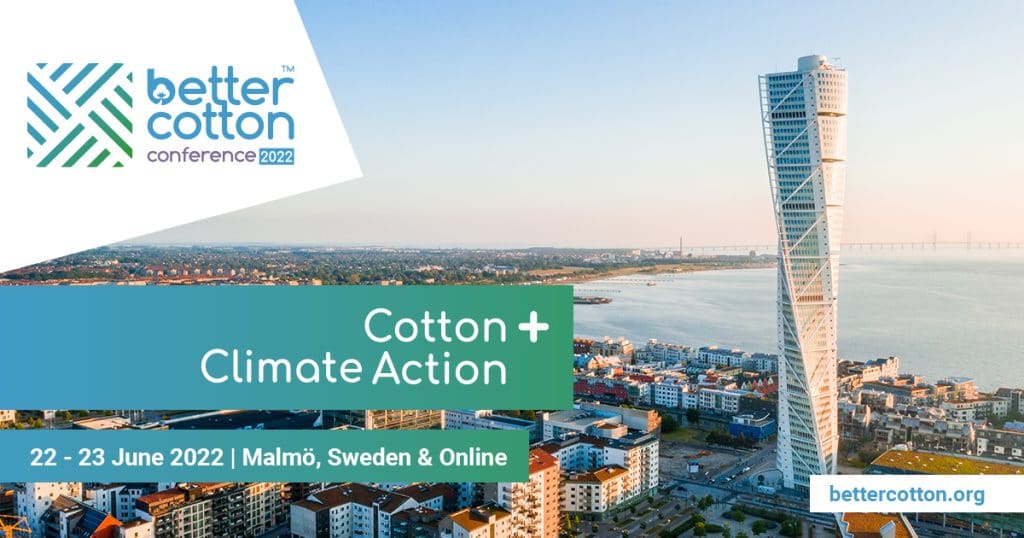

We are pleased to announce that registration for the Better Cotton Conference 2022 is now open!
Hosted in a hybrid format—with both virtual and in-person options for joining—we look forward to the opportunity to bring our global cotton community together and engage face-to-face once again.
Date: 22 – 23 June 2022
Location: Malmö, Sweden or join us online
Audience: Public
Price: Early bird tickets start at €272 (excl. VAT)
Register before 4 April 2022 to take advantage of the early bird rates.
Conference Theme
This year the conference theme is Climate Action. We will be exploring a wide range of topics through this lens including:
- regenerative agriculture,
- traceability,
- gender equality,
- climate change capacity building and many more.
Join us to see how the sector can collaborate in these areas to create and drive collective impact in shaping a more sustainable future for cotton.
Sponsorship Opportunities
We have a number of sponsorship opportunities available, from supporting cotton farmers’ travel to the event, to sponsoring the conference dinner.
Please contact Events Coordinator Annie Ashwell at [email protected] to find out more.
Read moreIs Regenerative Farming Just a Buzzword or a Blueprint For Restoring Soil Health?
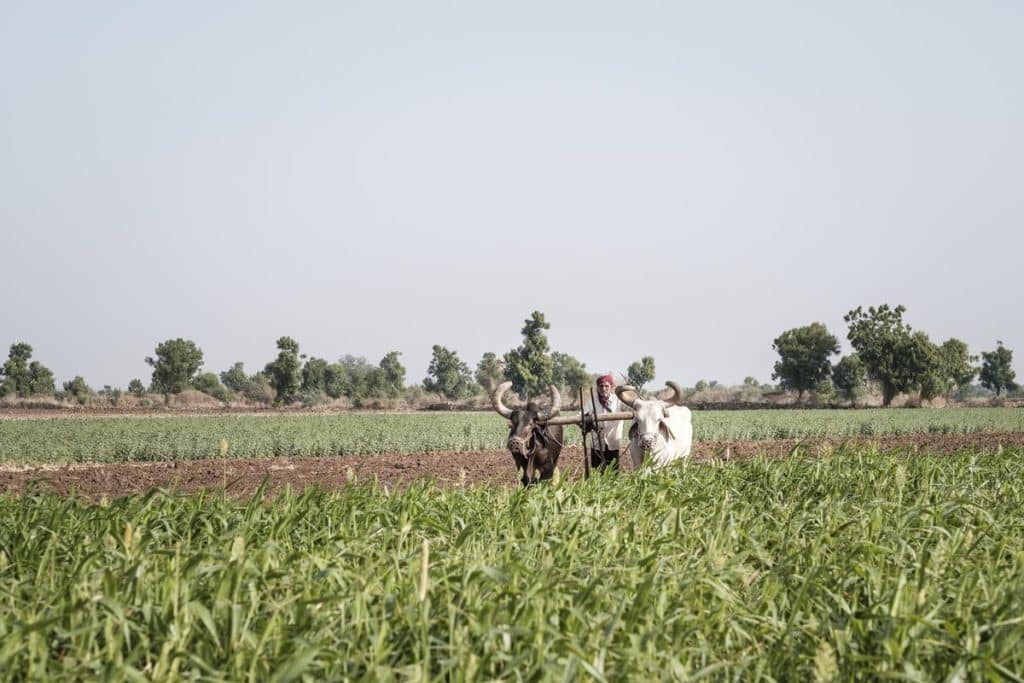

By Alan McClay, CEO, Better Cotton. This opinion piece was first published by Reuters Events on 9 March 2022.
Irreversible ecosystem collapse is looming. If nothing is done to stop it, farming systems face a potentially catastrophic future, with severe implications for society the world over.
This isn’t hyperbole. It’s the verdict of hundreds of the world’s leading climate scientists, as recently expressed in the Intergovernmental Panel on Climate Change’s (IPCC) latest report. The writing is already on the wall. According to the United Nations Food and Agriculture Organization (FAO), over one third of the world’s soils are already degraded due to erosion, salinisation, compacting, acidification and chemical pollution. The result? An absence of the diversity of life that is integral to nourishing plants and crops.
The core idea of regenerative agriculture is that farming can give back to, rather than take from, the soil and society.
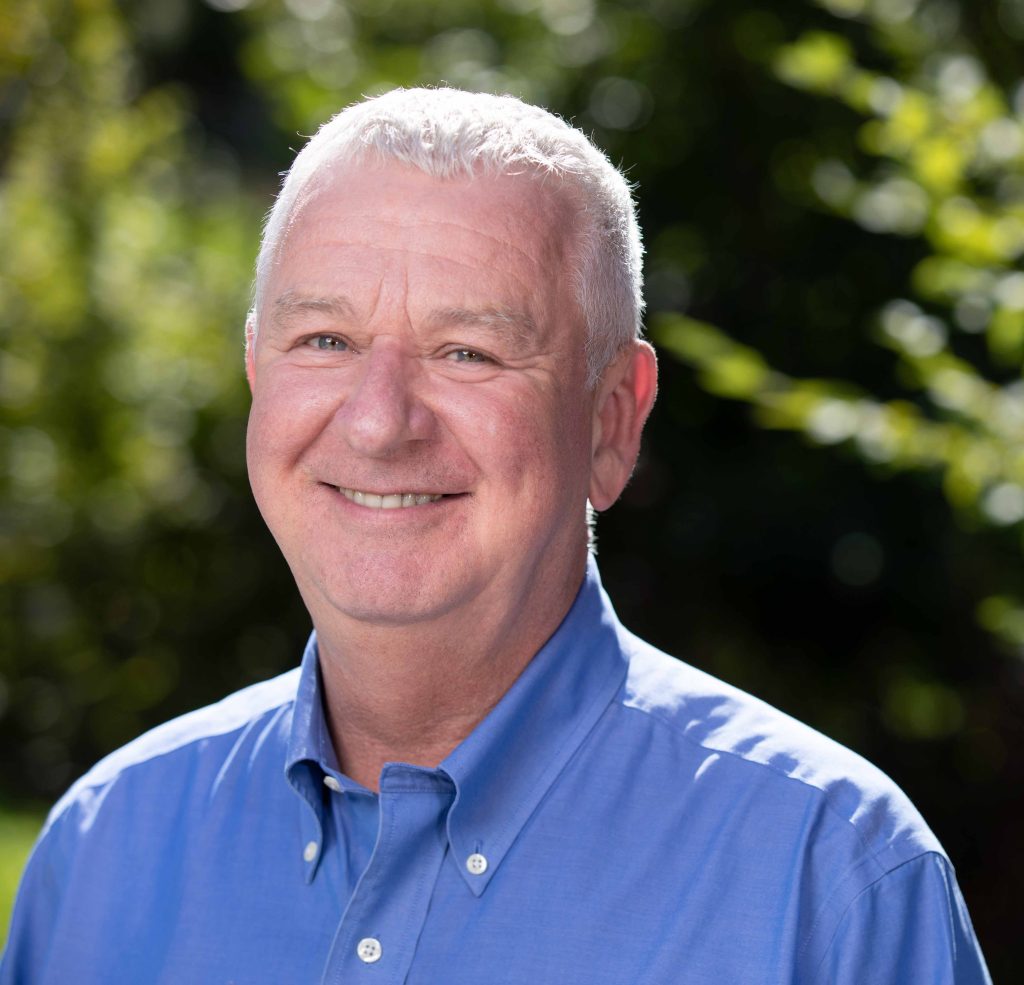

As every farmer knows, healthy soil is the foundation of productive agriculture. Not only does it help cycle nutrients and filter water, it helps increase resilience to climate change by returning carbon to the ground. Cue the new buzzword on the block, “regenerative agriculture”. From one day to the next, the phrase seems to be everywhere, from the mouths of climate advocates to the speeches of leading politicians. Not since the “Green Revolution” of the 1950s has a farming-related buzzword gathered so much pace so quickly. As ever, critics have not been slow in coming forward. Their arguments follow conventional lines. Some say the term lacks rigour – “regenerative”, “organic”, “sustainable”, “carbon-smart”, all spawn from the same woolly basket. Others maintain that it’s an old idea rehashed in modern clothing. What were the earliest agriculturalists of the Fertile Crescent if not regenerative farmers?
Such criticisms hide more than a little truth. The term regenerative agriculture can certainly mean different things to different people. And, yes, it does embrace concepts such as reduced tilling, crop rotation and cover crops that, in some cases, go back millennia. But to gripe about terminology is to miss the point. For one, the vagaries of definition are not nearly as great or problematic as some like to claim. The core idea of regenerative agriculture – namely, that farming can give back to, rather than take from, the soil and society – is hardly controversial.
Fuzzy terminology can confuse consumers and, worse still, facilitate greenwashing.
Secondly, farming techniques vary enormously, meaning specific methodologies are always going to be hard to pin down. Practices pursued by farmers in west Africa, where the soil is notoriously infertile, for instance, will be different from those adopted in India, where pests and erratic weather are chief concerns.
Thirdly, lack of complete consensus doesn’t necessarily lead to a complete lack of action. Take the U.N.’s Sustainable Development Goals; the specifics of each goal may not please everyone, but they please people enough to amass a huge amount of collective energy.
In a similar vein, fresh terms can refresh our thinking. A decade ago, conversations about soil health and crop yields tended heavily towards the technical. A little less fertiliser here, a little more fallow time there. Today, with talk of regenerative agriculture increasingly widespread, extractivist agriculture itself is now on the table for debate.
Of course, clear definitions are important. In their absence, misunderstandings can arise in practice that slow or even undermine the transition to more sustainable farming. Likewise, fuzzy terminology can confuse consumers and, worse still, facilitate greenwashing. In this regard, Textile Exchange’s recently published Landscape Analysis of regenerative agriculture marks a valuable and timely contribution. Built through dialogue at all levels of the farming community, it establishes an important set of basic principles that all major players can get behind.
We especially welcome the report’s acknowledgement of benefits beyond carbon storage and emission reductions – important as both certainly are. Regenerative agriculture is not a one-trick pony. Improvements to soil health, habitat protection and water systems are just some of the other ancillary environmental benefits it delivers.
We see the fact of regenerative agriculture now being on everyone’s lips as a huge positive.
Likewise, as an organisation committed to improving the livelihoods of millions of cotton producers, the emphasis on social outcomes is also to be applauded. As critical actors in the agricultural system, the voices of farmers and workers are fundamental to deciding how regenerative farming is framed and what outcomes it should aim for.
To reiterate, we see the fact of regenerative agriculture now being on everyone’s lips as a huge positive. Not only is the unsustainability of today’s intensive, input-heavy farming increasingly well understood, so too is the contribution that regenerative models can make to turning this around. The challenge going forward is to turn growing awareness into on-the-ground action. The issues that regenerative farming seek to address are urgent. At Better Cotton, we’re big believers in continuous improvement. Rule number one? Get out of the blocks and get started.
One key lesson we have learned over the last decade or so is that effective action won’t happen without an effective strategy to back it up. That’s why we encourage our participating field-level partners to establish a comprehensive soil management plan, spelling out tangible steps for improving soil biodiversity and preventing land degradation. Another crucial impetus to action is telling a convincing story. Farmers won’t transition from what they know on the basis of anecdotes and promises. Hard evidence is required. And, for that, investment in monitoring and data research is needed.
Fashions, by nature, move on. In the case of regenerative agriculture, expect definitions to be refined and approaches to be revised. As a basic concept of how we ought to farm, however, it is firmly here to stay. Neither the planet nor farmers can afford it otherwise.
Learn more about Better Cotton and soil health
International Women’s Day 2022: Insights from the Cotton Field with Narjis Fatima
Narjis Fatima, Field Facilitator, WWF-Pakistan
From an early age, Narjis developed a special love and affinity for agriculture and nature. Her mother, who was a cotton picker and a leader for women workers’ rights, inspired her to support women in the cotton sector. WWF-Pakistan appointed her as a Field Facilitator in 2018. Narjis has since trained countless women from the local villages and communities on better cotton-picking practices.
What inspired you to work with women in the cotton sector?
Agriculture being our family business, I loved it since childhood. My father was a farmer, and my mother was a cotton picker. After completing my studies, I used to go cotton picking with my mother. Along with cotton picking, my mother was also a leader for women workers’ rights. Some of the farmers either used to pay fewer wages or did not provide clean drinking water and she wanted to change this. I was inspired by my mother’s commitment to workers’ rights, and I wanted to do something for the workers too.
What motivates you in your role as a Field Facilitator?
The aim of our project is to promote Better Cotton cultivation to make cotton production better for the grower, better for the environment and better for the cotton industry. By training women workers on the principles of Better Cotton, I can play my role in producing sustainable cotton, and I can improve their social and economic resources. I can also contribute to the benefits of innovation in agriculture and play a role in saving nature. That’s why I wish to drive innovation in agriculture to provide a brighter future for my children. I love nature so much that I want to work for its survival.
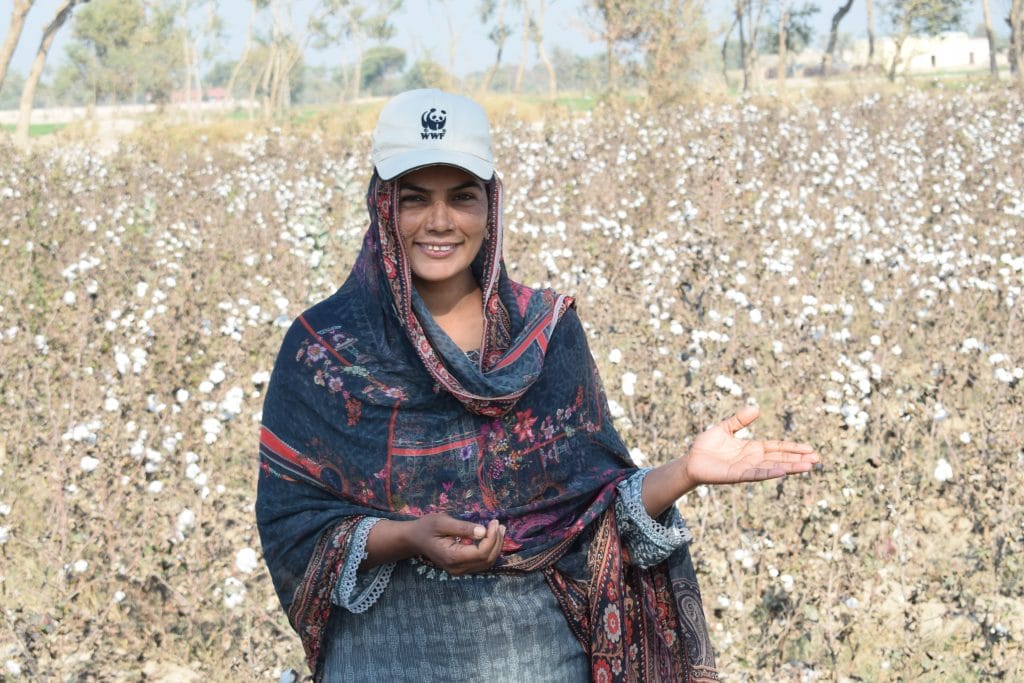

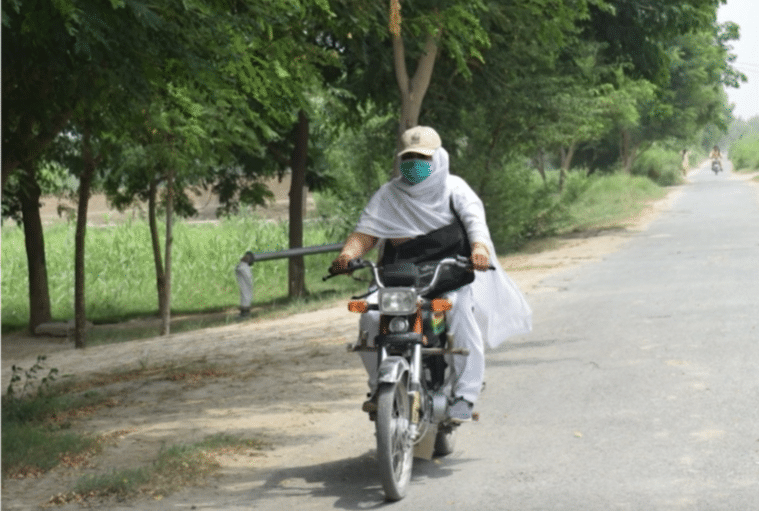

Can you tell us about one of the biggest challenges you’ve had to face as a woman in the cotton sector?
When I started working for WWF-Pakistan, I faced a lot of problems because my family did not want me to work. No one from my family would take me to the field and there was no public transport facility in our area. I had to learn how to ride a motorbike by myself. I fell several times and suffered many injuries, but I did not give up. In the end, all my hard work paid off. I have been riding my motorbike for three years now and going to the field on my bike has inspired a lot of other women.
Can you share any examples of new practices that have led to positive change?
We train women workers on the benefits of using personal protective equipment when working in the field. We show them how to cover their head before picking, use face masks, cover their hands with gloves and use cotton cloth for cotton picking. I am very glad that so many women are now following safer practices.
What are your hopes for the cotton communities you work in?
I hope that our training will encourage more children to go to school and that our cotton growing society will grow their cotton in line with the Better Cotton Principles. I also hope that workers’ rights will be respected, and natural resources not misused. I hope that our cotton community will protect the environment and adopt water saving methods, protect biodiversity and pay equal wages. I hope that no one will ever be discriminated against based on their caste, colour, race, or religion. Finally, I hope that workers will have freedom of association and women will have equal rights with men.
International Women’s Day 2022: Insights from the Cotton Field with Gülan Oflaz
Gülan Oflaz, Field Facilitator, GAP UNDP, Turkey
Gülan’s desire to return to her farming roots led her to study to become an agricultural engineer. Combining her hands-on experiences and her expertise, she now works with cotton farmers in Sanliurfa, which sits at the heart of cotton production in Turkey.
In her role as Field Facilitator for GAP UNDP, Gülan and her team are responsible for 150 farmers in 25 villages. They conduct field visits, assess the needs of the farmers in their project areas and deliver trainings on the Better Cotton Standard. Their goal is to support cotton farmers to adopt more sustainable farming techniques and continuously improve their practices.
What led you to work in the cotton sector?
I wanted to help develop and improve cotton production in line with sustainable cotton farming practices, support better working conditions for farmers and farm workers, and carry out activities without disturbing the natural balance of the ecosystem. I’m excited to work in sustainable cotton farming and contribute to this step of its production.
What are the biggest challenges you see in the cotton communities where you work?
There are numerous challenges in cotton production. First and foremost, it’s helpful to remember that it is difficult for any of us to change the habits that we learn from our ancestors, and in this context, farmers are used to growing cotton using the traditional agriculture methods they’ve become accustomed to. For example, we have seen farmers using water and pesticides excessively, regardless of the plants’ needs, and over fertilising the soil without conducting any soil analysis. Many are also unaware of their labour rights and the support they have access to.
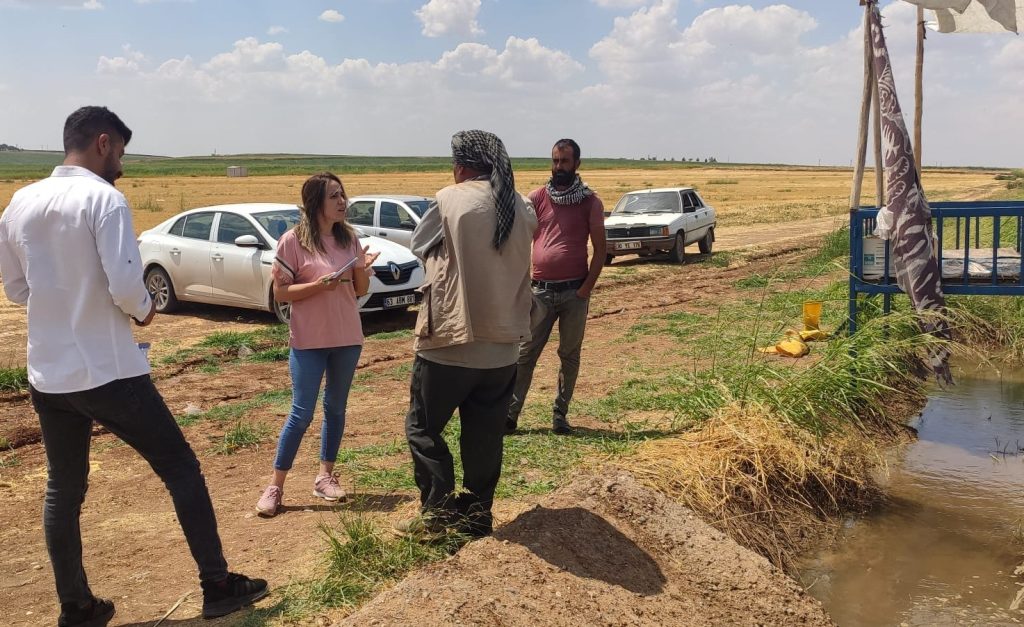

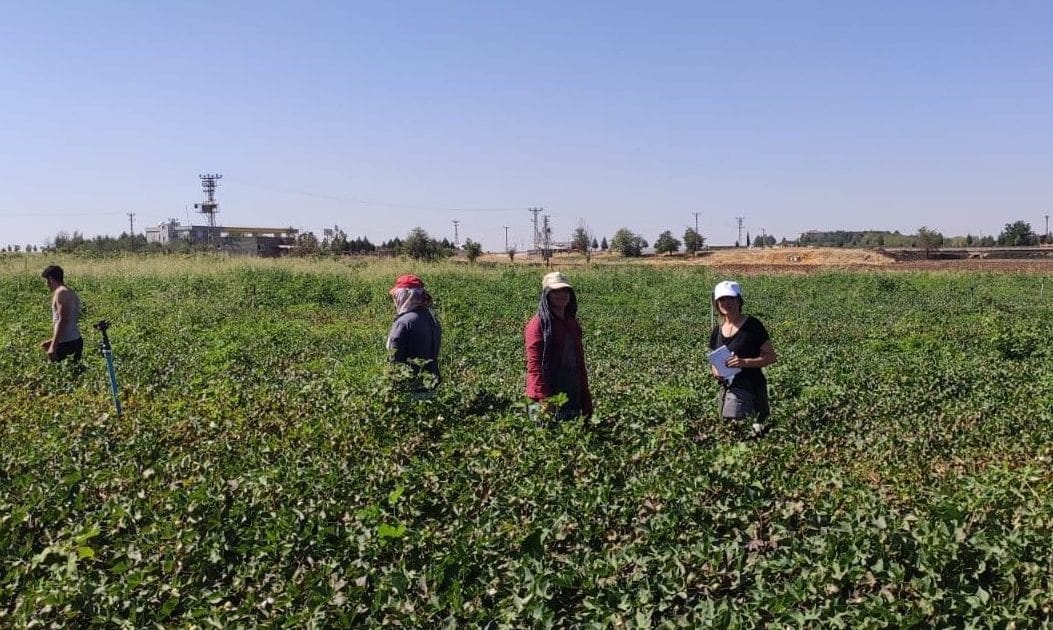

Can you share any examples of new practices that have led to positive change?
When I started out, I saw farmers applying pesticides without considering the pest threshold level, which led to an over-use of pesticides, damaged the ecology of their farmland, increased farming costs and increased the resistance of the pest population. At GAP UNDP, we organise and deliver trainings to farmers on the importance of reducing pesticide applications, measuring pest populations before spraying pesticides, and encouraging beneficial insects, which act as natural pest control. We also work with farmers to address water use and prevent excessive water waste by measuring their usage and installing sprinkler systems and drip irrigation systems in their fields. We have seen practices and behaviours changing for the better over time.
What specifically inspires you to work with women in cotton?
In cotton farming, women constitute a large proportion of the work force. Many women in the cotton farming regions in Turkey have a lower level of education and often work on their families’ farms in order to contribute to the combined family income. I want to raise awareness of better working conditions and to encourage women by helping them to develop their technical skills and knowledge, helping them to contribute and play their role in sustainable cotton farming.
What are your hopes for the cotton communities you work in?
Together, we will continue to contribute to sustainable cotton farming in our country and improve the living and working conditions of all farmers and farm workers, particularly women.
International Women’s Day 2022: Insights from the Cotton Field with Anjali Thakur
Anjali Thakur, Producer Unit Manager, Ambuja Cement Foundation, India
Anjali grew up in an agricultural family and went on to achieve an undergraduate degree in Horticulture and an MBA in Agribusiness Management. She has always had a desire to work with and support farming communities and families, and this inspired her to pursue a career in this sector.
In her role as Producer Unit Manager at Ambuja Cement Foundation, Anjali works to build the capacity of the field-level staff who deliver trainings to Better Cotton Farmers. She works with them to develop demonstration plots where they can showcase best practice farming techniques, and she conducts research and baseline surveys to assess the effectiveness of the practices adopted by farmers.
What key challenges do you see in cotton production in India?
The use of pesticides is a challenge – we know that the excessive use of pesticides is harmful for the environment, to soil and water, and indirectly harmful to human health. I want to keep raising awareness among farming communities to use less and less pesticides and to find alternative natural methods of pest control. Achieving this motivates me in my role.
Can you tell us about any positive changes that you have seen on the ground?
I work with cotton communities on the ground, and I have seen lots of positive changes over the years. It’s easy to adopt new practices in the field, but positive changes in terms of long-term behavioural change is very important. For example, previously, farmers were not using personal protective equipment when applying pesticides, but now they are. And if I look 8 to 10 years back there was child labour, but in our project areas that has now been eliminated. The way the farmers want to learn and the way they are improving themselves inspires me.


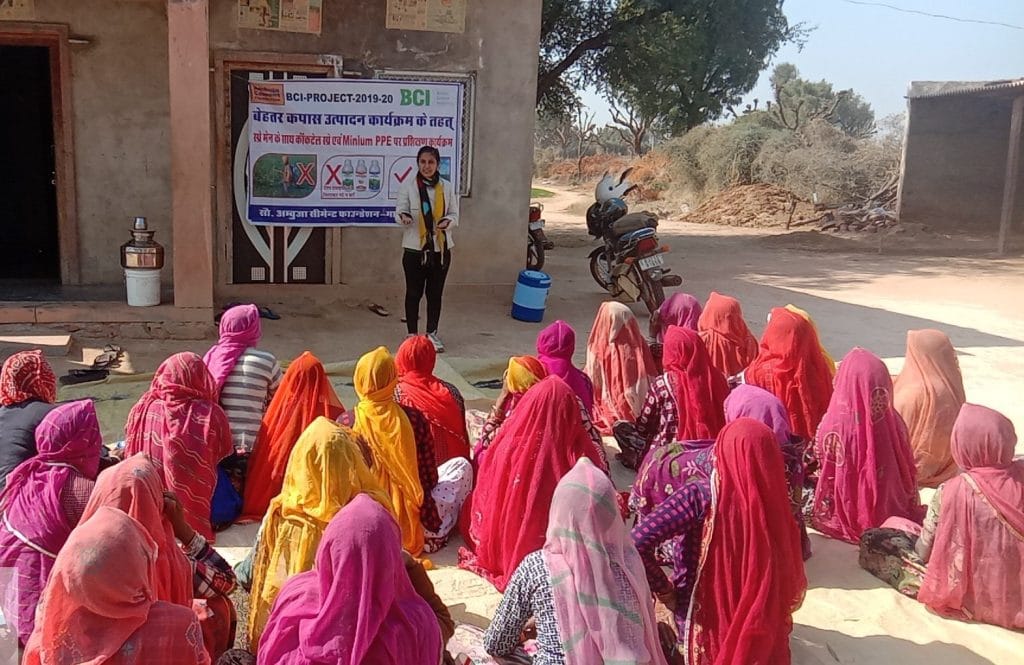

Can you share some examples of the more sustainable practices that farmers are implementing?
There are lots of practices that contribute to sustainable agriculture. For example, to support better water conservation and harvesting, we work with farmers to install farm ponds and drip irrigation in their fields – we know that the efficiency of drip irrigation is 85% – 90% so this is contributing to reduced water usage and more sustainable practices overall. We also conduct soil and biodiversity mapping and then work with farmers to restore these resources on their farms. More broadly, I identify government schemes that may help to support farmers in implementing new practices and I look for opportunities to partner with universities and institutions to support relevant research studies into sustainable farming practices.
Tell us more about how you are supporting women in cotton?
When I started out in my role, I saw that many women were involved in farm labour, but they were not involved in any decision making. I wanted to share my knowledge with them to empower them. I started to deliver training sessions and raise awareness about the Better Cotton programme and other agronomical practices among female farmers and farm workers. The way they are learning new things inspires me. Before, they had limited knowledge of more sustainable practices, but now they know about pesticide labelling, how to encourage beneficial insects, and the benefits of wearing personal protective equipment, such as masks and gloves.
Are there any thoughts you would like to leave us with?
I live and work in a male dominated society – I see in the villages that many fathers do not let their daughters go and study higher education. My role is important in delivering training to women, as they then inspire and encourage one another, which opens up new opportunities for them. I see this driving change for future generations.
Read moreMeet the Women Leading the Change in Sustainable Cotton Farming: International Women’s Day 2022
This International Women’s Day 2022, we are placing the spotlight on the inspiring women who are using their expertise and passion to drive positive change in cotton farming.
Following this year’s IWD theme, this feature focuses on our aim to #breakthebias of agricultural extension services prioritising the needs of men and dominant groups over women and disadvantaged groups. One way we are progressing this aim is by actively supporting more women into field staff roles, where they can inspire cotton communities to adopt more sustainable practices.
We spoke with representatives from three Better Cotton Implementing Partners: Anjali Thakur, Ambuja Cement Foundation in India; Gülan Oflaz, GAP UNDP in Turkey; and Narjis Fatima, WWF-Pakistan to learn more about their work, how they are supporting women in cotton, and the changes they are seeing on the ground. These three women joined our Implementing Partner Meeting in January 2022 during a spotlight panel. The below interviews and video clips are extracts from that event.
We believe that a transformed, sustainable cotton industry is one where all participants have equal opportunities to thrive. In our 2030 Strategy we recognise our opportunity to tackle systemic inequalities and unequal gender relations to promote shared power, control of resources, decision-making, and support for women’s empowerment. We are committed to convening, inspiring, and influencing the wider industry to also take transformative action.
Our 2030 women’s empowerment impact target is focused on creating more opportunities for women like Anjali, Gülan, and Narjis. In collaboration with our partners, we are committed to increasing the proportion of women field staff, such as Producer Unit Managers and Field Facilitators, in our programmes. Field staff of all gender identities are critical to our mission. They are the people that make Better Cotton real for participating cotton communities. They travel long distances and work in challenging conditions to tackle difficult issues and inspire positive changes for the environment and local communities.
Women field staff are often better placed to meet the particular needs of women in cotton. By setting a target to increase the proportion of women field staff who make Better Cotton a reality, and developing new initiatives to meet the particular needs of these women, we believe that our programmes will become more impactful and more inclusive.
In this year’s Better Cotton Council Election, we encourage women and those from underrepresented communities to apply for a leadership position on the Better Cotton Council. Better Cotton Members have until 15 March to submit their application. Learn more.
Read moreBetter Cotton Council Election 2022: Submit Your Application Before 15 March
The deadline for Better Cotton Members to apply for a position on the Better Cotton Council is getting closer!
The Better Cotton Council is an elected board that drives cotton towards a truly sustainable future. The Council sits at the centre of the organisation and is responsible for our strategic direction. Together, the 12 Better Cotton Council Members shape the policy that ultimately helps to fulfil our mission: to help cotton communities survive and thrive, while protecting and restoring the environment.
In this year’s election, there is one seat open for election in each of the following Better Cotton membership categories: Civil Society, Producer Organisation, Retailer & Brand, and Supplier & Manufacturer.
This is a great opportunity for members to represent their area of the cotton supply chain, share valuable industry insights, and contribute to the delivery of Better Cotton’s 2030 Strategy, while being part of a multi-stakeholder governance body.
Interested candidates are invited to submit applications by 15 March 2022. All details and the election timeline can be accessed in the members’ area of the website.
Learn more about the Better Cotton Council and existing members here.
Read moreUnderstanding the Living Soil: There Really Is a Universe Beneath Our Feet
By Karen Wynne, US Programme Coordinator, Better Cotton
Karen is certified as a Soil Scientist and Classifier by the Soil Science Society of America.
You may think that below the ground there’s only dirt. Roots grow through it, and maybe an earthworm or two lives there. And do you ever wonder how plants get water and nutrients? Maybe they grab what they need from the soil and farmers top up the nutrients with fertilisers? Well, it may come as a surprise, but soil is quite a lot more complex than that.
There’s literally a whole universe beneath our feet.
The mineral soil, the silt, sand, and clay, even the roots, are home to all kinds of macro- and microorganisms (also known as the soil biome) that spend their time eating plant residues and each other, and in the process transform and store nutrients, and build soil structure. Just one teaspoon of healthy soil can contain more microorganisms than the total number of people on Earth. That’s amazing, right?
In fact, soil is a complex and living system that we hardly understand. Soil scientists call the earthy world of microorganisms the ‘black box’. We’re still gaining knowledge of these microbes and how they interact with each other, their environment and plants. DNA sequencing and other amazing scientific advances have transformed our capacity to understand more about this underground world, and faster than ever before.
Why it’s important to act on soil health now
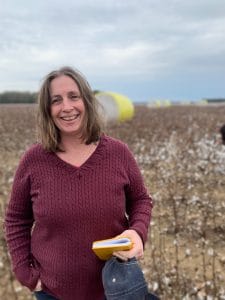

Healthy, biodiverse soil is fundamental to thriving crops, cycling nutrients, and filtering water. Soil can also increase our resilience to climate change by returning carbon to the ground, and buffering the impact of drought and flooding. But today, humans have a greater impact on the landscape than any other force. Our soils have become so degraded and eroded from industrial and agricultural development, that they no longer contain the diversity of life that’s integral to nourishing plants and crops.
Within cotton farming, it’s vital that we encourage farmers to help create the best conditions for soil organisms to do their thing. That’s why healthy soils are a key focus for us at Better Cotton. We work closely with our on-the-ground partners and farmers to introduce effective, sustainable soil health practices. For example, maintaining continuous living roots creates a habitat to keep soil organisms active. Increasing the diversity of crops and cover crops builds diversity below ground too. Meanwhile, reducing tillage helps to protect the fragile underground ecosystem.
We also collaborate with scientists and agronomists worldwide to help gather and share knowledge to encourage progress across the cotton sector. This year, to make further progress, we’ll be launching a 2030 soil health target as part of our 2030 Strategy.
A thriving soil community
Here are a few of my favourite members of the soil community. Let’s look at the valuable role they play in creating healthy soils.


Earthworms are typically present in healthy soils. Darwin wrote the page-turner The Formation of Vegetable Mould through the Action of Worms, with Observations of their Habits back in the 1800s. It was a bestseller. He tells us that earthworms can break down at least their weight’s worth of plant materials in a week, grinding them into a powder-like [compost], known as castings, that helps nourish the soil. Raising worms and farming their castings is a super low-tech system that produces stable organic fertiliser. This approach can easily be used on a small farm or even in an apartment. Worms don’t take up much space.
Arbuscular mycorrhizal fungi (AMF) form mutually beneficial relationships with plants. They have an extensive system of branches called hyphae that insert themselves into the actual root cells, extending the plant’s access to water and nutrients, especially phosphorus, far beyond the roots’ reach. In return, the fungus gets sugars from the plant. AMF also produce glomalin, a kind of glue that holds soil particles together and provides an ideal habitat. One scientist in British Columbia has written a book on how trees communicate and share nutrients through their roots and the fungal network that connects them. It’s amazing how different species cooperate.
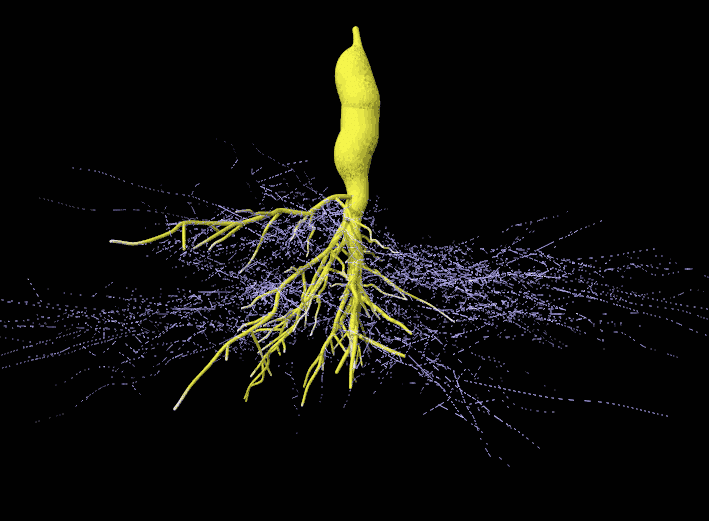



Mycobacterium vaccae, a bacteria found in soils, has been shown to work as an antidepressant. They produce a fat that seems to counter stress-related inflammation in our bodies that can lead to depression. The connection isn’t completely understood yet, but this little bacterium may well have the ability to counteract our natural stress responses. Maybe that explains why I am happier with a little soil under my fingernails.
Dung Beetles are another helpful sign of healthy soils. They live in many different ecosystems on every continent, except Antarctica. The beetles feed on manure and, depending on the species, may transport it to their underground tunnel or roll it into a ball and bury it in the soil to lay eggs. And here’s a fun fact – they also orient themselves using the sun, moon and Milky Way as a guide.
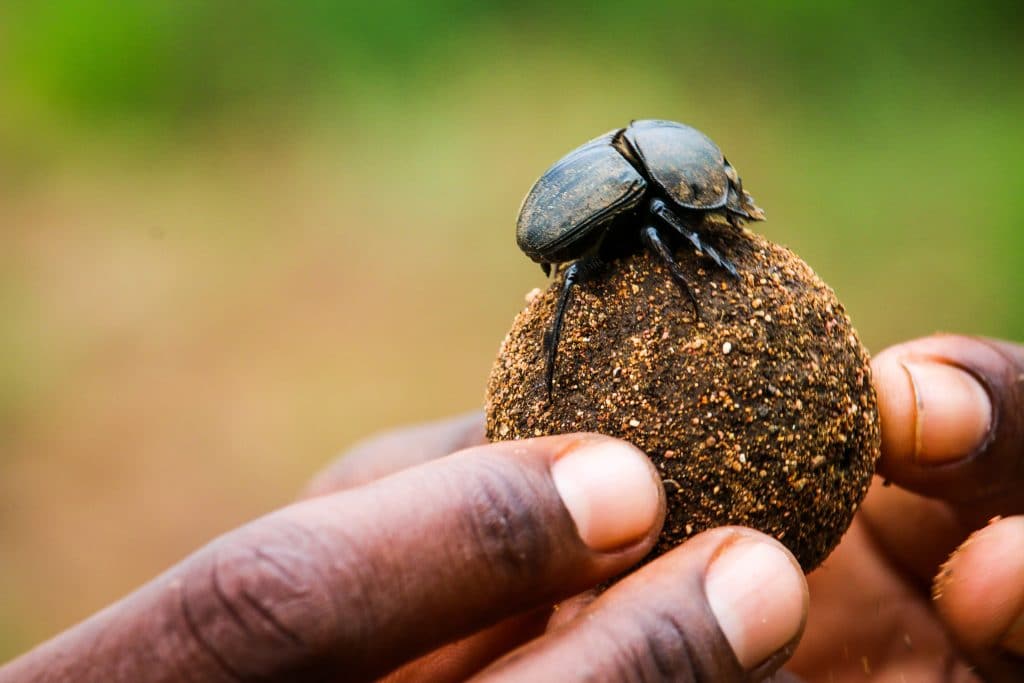



And finally, soil enemies… There are plenty of pests and pathogens in the soil too, and these can pose a risk to healthy crops and people. An unbalanced ecosystem can result in the loss of predators of these pests. For example, nematodes (microscopic roundworms) can be pests, but predatory nematodes such as the Steinernema species can attack grubs in the soil, including common cotton pests like pink bollworm and armyworm. A well balanced soil biome helps maintain these beneficial species of nematodes and prevent outbreaks of cotton pests.
The good news is we have momentum. There’s more investment, more collaboration and outreach with farmers, and more communication on these issues. There are enough films about soil for a small film festival. There are a lot of smart and committed soil scientists out there asking all the right questions, farmers working together to share knowledge, and organisations like Better Cotton helping farmers to make changes without expensive lab tests or tools.
More and more, the farming community is realising that to create the best environment for a very dynamic system, we need healthy soils. And when farmers use practices that support the soil biome, they can often save money by enabling natural systems to do the work. If we can continue this democratic and cooperative approach, we should really make a difference.
For more information on how Better Cotton is promoting soil health on cotton farms, please read more here: https://bettercotton.org/field-level-results-impact/key-sustainability-issues/soil-health-cotton-farming/
Learn more
What Is Soil Health? Better Cotton Launches New Soil Health Series
Soil is quite literally the foundation of farming. Without it, we could neither grow cotton nor support our growing global population. We know first-hand at Better Cotton that improved soil health can enhance productivity and yields, which also directly improves farmer incomes. Not only that, but many soil health management practices are also climate change mitigation measures. These measures stand to make a big impact when considering that global soils contain more carbon than vegetation and the atmosphere combined.
That’s why soil health is one of five impact targets that we are developing at Better Cotton as part of our 2030 Strategy, and an area we will be focusing our attention on over the coming weeks.
In our new Soil Health Series, we’re exploring the wonderful and complex universe beneath our feet, looking at why good soil health is so important and what Better Cotton, our partners and Better Cotton Farmers are doing to support healthy soils and the future of sustainable agriculture.
To kick off the series, we outline the five key factors that impact soil health. Learn more in the video above.
Look out for more content over the coming weeks, or visit our soil health webpage to learn more.
Read more
